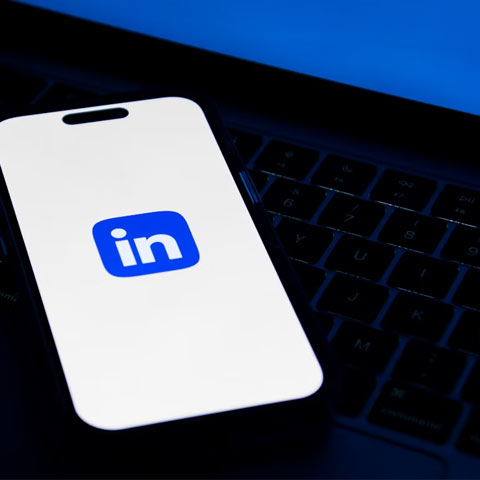One Size Doesn’t Fit All: Using Smart Data for Personalisation

Customising an email or SMS campaign is easy. Extreme personalisation — content written for each individual customer – uses the same methods, and takes surprisingly little extra resource. This eGuide is about turning personalised content into truly customised, dynamic content. It’s not a new way of working. But it does need a different frame of mind.
Get the downloadBelow is an excerpt of "One Size Doesn’t Fit All: Using Smart Data for Personalisation". To get your free download, and unlimited access to the whole of bizibl.com, simply log in or join free. |

|
Mass customization can go a lot further than surname and job title — so smart marketers are making the most of extreme personalization.
In March 2014 a minor earthquake shook Los Angeles. The way the LA Times reported it, it was an earthquake for web content too — the first published article was written entirely by machine. The article was hardly Pulitzer stuff — any marketing manager will recognize how they did it. (Similar to our mass-customized DM, a pre-written template with holes in the right places.) It’s the depth of customization that’s interesting.
First, it was actioned by data straight from the seismograph — the ‘quake was a trigger event. Then the publishing software constructed the article — based on data like place, time, and magnitude — rather than just slot data into merge fields. (Maybe it used the Richter number to select between “small”, “midsized”, or “utterly terrifying” as adjectives.) And it did it within three minutes. By using the methods of smart data.
Today, some switched-on sales guys send a personal Tweet to an opted-in prospect when they’ve read a web page. This is also customized content actioned by a trigger event. It works — according to Gartner, “event-triggered marketing can potentially save 80% of your direct mail budget” but it’s a resource hog. (Because the “smart data” part is in the sales person’s head.)
1. Think content, not data...
No marketer is fazed by a mass customization to 10 million people. You just segment and select merge fields. Name of course, job title, maybe offer price depending on their Gold Card or Early Bird status. Smart data takes it to an extreme. It understands you have as many segments as customers.
Data lets you personalize with Dear Mr. Smith and Dear Ms. Jones. Smart data turns it into Great to see you Amanda and Good Afternoon David!
A simple example: salutations. Most campaigns, offline and online, use “Dear” plus a field or two. What if your customer database included a metric for how close the customer is to you... perhaps a function of how much business he does? With the salutation decided by that metric?
That might lead to more possibilities than “Dear”. You might create a list like:
- Dear FIRSTNAME
- Good Afternoon FIRSTNAME!
- FIRSTNAME, it’s been a year.
- Come back to us, FIRSTNAME!
That’s the start of smart data: the content is chosen by the data field, not just having the data inserted into it.
So start by dreaming up a few metrics. How close does the customer feel to you? What stage are they at in the sales funnel? Is it the anniversary of your first deal? (If you’re in publishing or events management, you’ve probably got this data already.)
Take a look at your last online campaign. Can you can find six “descriptors” – six points in your marketing communication that’d benefit from personalization? Instead of a single form mail, write six content variants for each. That’s only 36 chunks of custom content to create. But the number of possible content combinations is six to the power six. You’ve enabled deeply personalized content for an audience of nearly fifty thousand. And we’ve hardly started yet.
2. … and think structure first, content second
Most email marketers write their email copy first, then customize it with merge fields and database pulls. Smart data adds a great deal to that model. What if you planned your email first as a structure, rather than forging straight ahead with copy? That leads to smart data.
An example. Let’s say you want to cover eight points in your email. So the structure might contain eight paragraphs, each of 3-6 sentences. Each paragraph will span one idea, with each sentence one point in support of that idea. (Like an artist “seeing” the human body as a set of circles and cylinders, you’re seeing your communication as its structure, not its content.)
Then look at your audience. Let’s say you know it’s half B2B, half B2C. Half the B2Bs are retailers and half of all are over 40 years of age. If you used that data to write copy individualized for each audience… it can have a big effect on response rates. Because there’s a “power law” involved: a small increase in the content you write can deliver a huge increase in the level of personalization.
Let’s say from that eight-paragraph structure, you write four variants of each sentence in your email. The variants are:
- Retail sector readers
- Consumer readers
- Readers 18-39
- Readers over 40
(In real life, those data metrics that drive each chunk of content can be creative. Your customer’s local football team? Their children’s names? Their competitors? Your competitors? Anything that makes them feel you’re writing to them, and them alone. The best copywriters will even localize spelling and slang.)
Now imagine your email with each sentence in it “selected” by one of these four customer data metrics by your email software. (Including whether the reader even needs it!) That’s about a hundred chunks of text to write. A “set” of 100 or so sentences, from which your marketing software will build an intimately personalized letter using 25-40.
The number of possible letters from those 100 sentences? It’s over a trillion..
3. Expand into the social media sphere
Look again at our hypothetical set of 100 sentences. Some will be very local. Others will be very time-sensitive. Let’s say you’re organizing an events series. You don’t need to know your prospect likes football to add “If you’re going to the _YOURTEAM_ away game, our event the next day is in the same town.” (Where “YOURTEAM” is whatever team plays in his home city.)
You can include this extreme personalization in your marketing email. But it makes sense to tweet it to any feeds you know your reader is watching, too. Together with a link to the reservation form. It increases customer touchpoints… and increases uplift.
That’s pretty extreme personalization — yet it uses just four pieces of customer content, all simple. And once the hard work of extreme personalization is done, you can leverage it in multiple ways. That’s why you need to gather your customers’ social media accounts with just as much vigor as you capture email addresses — the latest marketing platforms and partners can help you leverage them.
4. Go low and go niche
Step Four ekes out every last percentage point of click through and conversion — by going deeper into the forest: to the forums, LinkedIn groups, specialist blogs and news sources where your customers hang out.
Again, there’s some upfront work. You’ll need a list of those forums, and what topics and facts are of interest there. (Again, a good marketing partner can help.) And the actual number of posts you make will be small — perhaps in single figures for a campaign to 10,000 people.
But those few posts will have disproportionate impact. Because if you’re reaching out to your customer from more than one direction, it’s more memorable. If your main campaign is the steak, and social media the grilled mushrooms, think of forums outreach as the black pepper. (Or maybe the secret sauce.)
Conclusion: smart data isn’t that different
While the impact of extreme personalization can be huge, you now see the methods of doing it aren’t that different from those you’re using now.
- It’s still using data points — but as content deciders, not just merge fields.
- You’re still writing compelling content — you’re just writing a larger set of it, from which your data builds a communication individually tailored to each customer in your database.
- And you’re still posting across social media — you’re just using intelligent tools to target it more effectively.
So let’s recap the four stages:
- To get in the mindset of extreme personalization, think content, not data.
- Explore the limits of personalization.
- Add value to the core email interaction by expanding into social media.
- And eke out max response by posting in niche forums and groups.
Want more like this?
Want more like this?
Insight delivered to your inbox
Keep up to date with our free email. Hand picked whitepapers and posts from our blog, as well as exclusive videos and webinar invitations keep our Users one step ahead.
By clicking 'SIGN UP', you agree to our Terms of Use and Privacy Policy


By clicking 'SIGN UP', you agree to our Terms of Use and Privacy Policy









